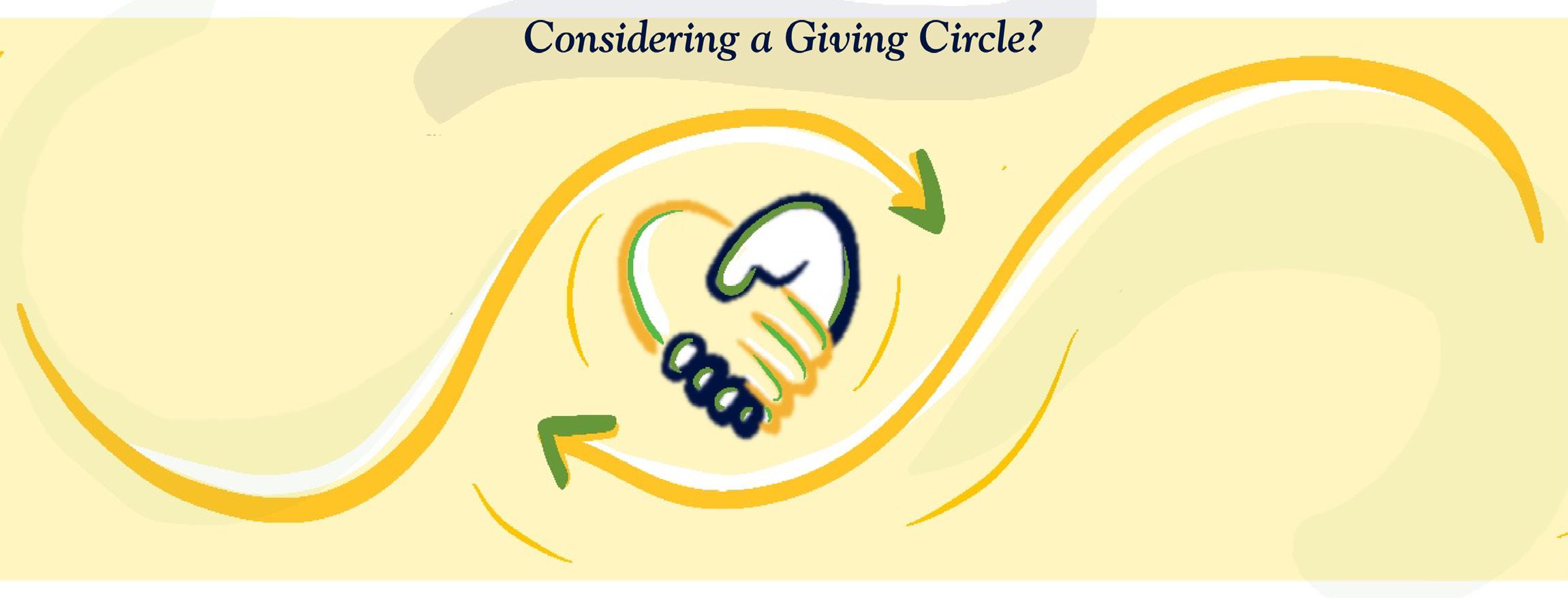
2 minute read
The Power of Collective Giving
Many hands make light work, goes the saying, and when collectively reaching for the checkbook as part of a giving circle, they also make a big impact on the nonprofit sector.
Giving circles consist of friends, associates, or others with mutual interests who pool their charitable dollars and make shared decisions about how their gifts are allocated to charity. Circles are as unique as the donors who comprise them, varying in size, members’ giving expectations, formality of governance, and philanthropic goals. They may be local, national, or international in scope and mission with divergent (if any) degrees of staffing and infrastructure. Circles may center around specific interpersonal and/or geographic communities, and they almost always include some form of social and educational activities. There are 2,000 known circles in the U.S. and countless numbers of informal, unregistered groups.
Informal circles grow organically and lack organizational charters, specific giving expectations, and meeting requirements. They are small enough that members make funding decisions as a group. The most formal circles are large, hierarchical organizations with prominent board members, detailed committee structures, minimum gift amounts, and representative voting on charitable activities. Increasingly, networks of giving circles such as the Community Investment Network, Impact 100, and Women’s Giving Circle International are organizing for even greater philanthropic leverage.
Giving circles provide individuals of all means with the opportunity to engage in impactful philanthropy. A $100 gift to charity can quickly turn into $1,000 or more when pooled with others’ gifts. The addition of zeros or donors to this example shows the exponential and significant nature of circle giving. Researchers estimate that known U.S. circles have contributed more than $1.29 billion to charity over the past 40 years. They also tell us that those who participate in giving circles are likely to give more in money and time overall than those who do not; to give proactively more often than reactively; and to be more engaged in civic and political activities than those who are not part of a circle.
The sense of community that circles foster is one of their most appealing features for many women.
A recent survey of active circles found that 70% of respondents said that more than half of their membership was female.
Further, nearly half of those that reported serving a specific identity were organized by women to support women’s concerns.

Considering a Giving Circle? Start by answering these questions. • What is the right size? • Who will be involved? • What are the group’s key values and interest areas? • Is there a required minimum gift for participation? • How often will you meet? • How will the group identify needs and giving options? • Who will make giving decisions? • How will gifts be conveyed to charity? • Are there existing organizations with which to partner?
Sondra Shaw-Hardy notes in her book, Creating A Women’s Giving Circle: The Original Handbook (Mission Point Press, 2021), that women’s increasing control of their own finances contributes to the growth of giving circles.
Joining or creating a women’s giving circle may be one of the most pleasant and meaningful ways to engage in philanthropy. To start one, all that is needed is a group of like-minded people, common interests, and a forum for discussing what the group would like to accomplish and where that might be done. Philanthropy Together (https://philanthropytogether.org) is an excellent resource for further information.
To learn how your circle might support Allegheny students and faculty, contact Melissa Mencotti at giftplan@allegheny.edu or by calling (814) 332-5912.



